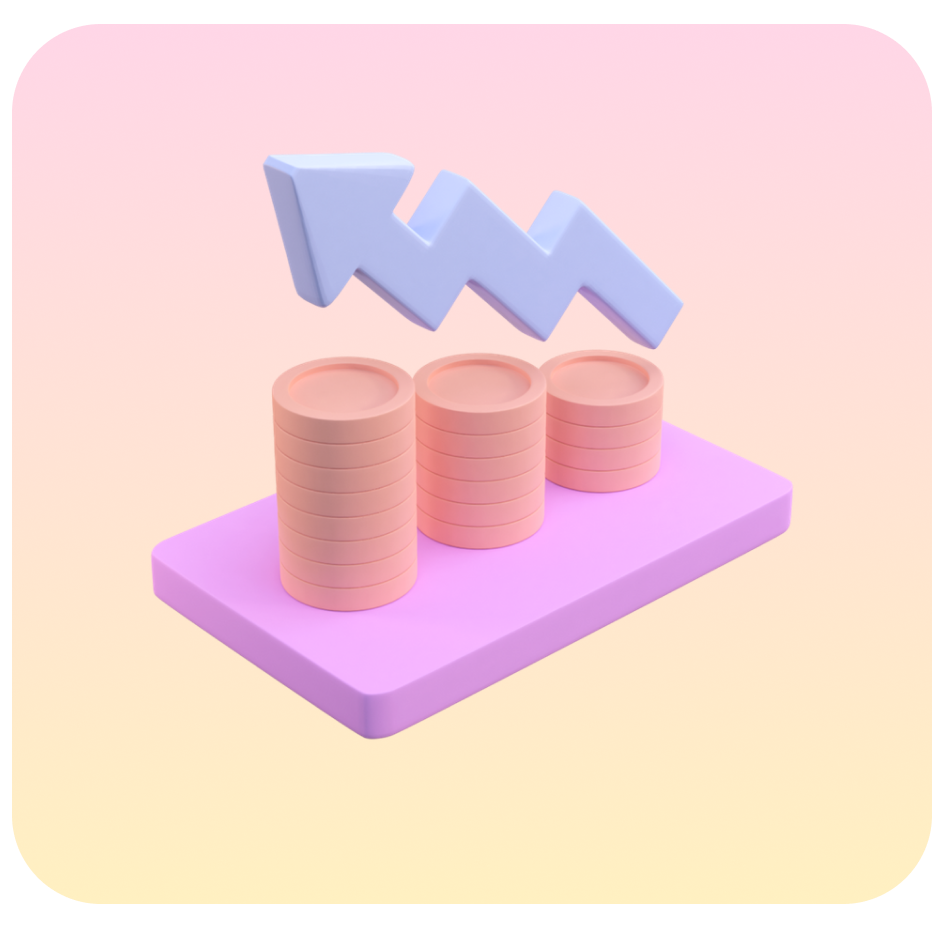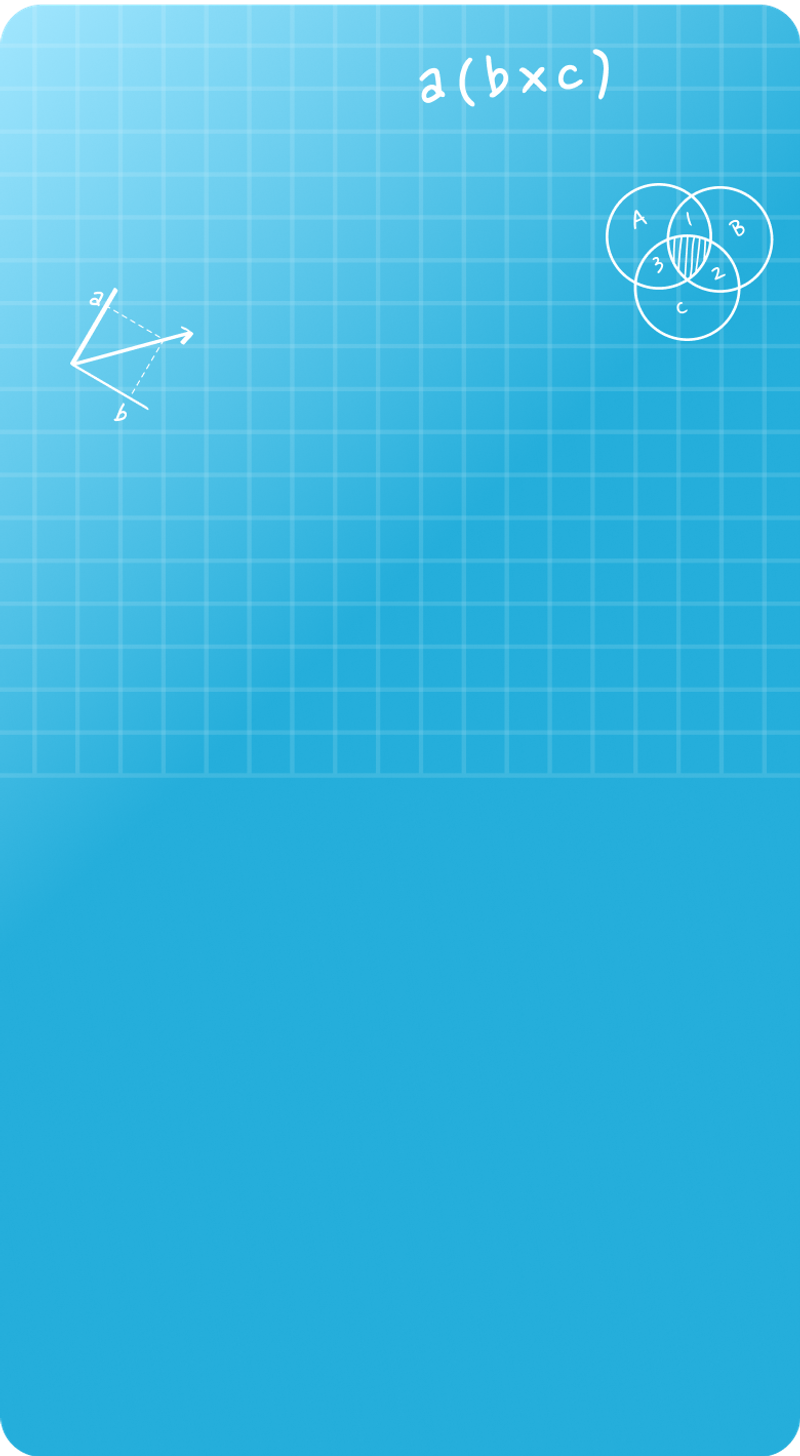
2404 Learners
Algebra
People often say that every student should know algebra by the time they finish high school. But what really is algebra? Is it truly that important? And why do so many people find it challenging to learn? First, algebra isn’t just “doing arithmetic with letters”. In reality, arithmetic and algebra are two distinct approaches to examining and solving numerical problems.
Share Post:
Trustpilot | Rated 4.7
1,292 reviews

What is Algebra in Math?

Algebra is a part of mathematics that uses letters and symbols to show numbers and how they change. These letters, called variables like x, y, or z, help us write and solve equations when we don’t know the exact numbers. In algebra, we use addition, subtraction, multiplication, and division to find the answers.
We also learn many fun and useful ideas such as square numbers (1 to 30), square roots, and log tables. The quadratic formula, Binomial Theorem, and Remainder Theorem help us solve tricky polynomials and other problems.
Algebra also teaches us about matrices and matrix multiplication, where we work with numbers arranged in rows and columns. We can find the adjoint of a matrix, its transpose, and learn what a symmetric matrix is. Using Cramer’s rule, we can even solve linear equations in two variables easily.
We explore patterns too, like the arithmetic progression and the Fibonacci sequence, which show how numbers can follow special rules. All these topics make algebra exciting and help us understand how numbers and geometric operations work together in real life.

History of Algebra
The word "Algebra" originates from the Persian mathematician Muhammad ibn Musa al-Khwarizmi, who wrote 'Kitab Al Muhtasar fi Hisab Al Jabr Wa’l Muqabala', later translated as 'The Compendious Book on Calculation by Completion and Balancing'.
The term "Al-Jabr" in the title is the source of the word "Algebra." Al-Khwarizmi defined algebra as a method for reducing and balancing equations by rearranging terms and canceling alike parts to solve unknowns.
Long before Al-Khwarizmi, the ancient Mesopotamians and Egyptians developed early algebraic ideas using symbols for unknown quantities. Around 2000 BC, Mesopotamians recorded calculations on clay tablets, including tables of squares up to 59, which aided multiplication and other operations.
The ancient Egyptians tackled "aha" problems, or finding unknown values, as seen in the Moscow and Rhind papyri containing linear equations. Additionally, the Berlin papyrus shows their understanding of quadratic equations, illustrating the long and rich history of algebraic concepts.

Branches of Algebra
Algebra is divided into various branches, which focus on different aspects. The different types of algebra are:
1. Pre-Algebra - It encompasses fundamental concepts that can help transform real-life situations into algebraic expressions.
Example: Vinny has 4 apples, and her friend has 12 more apples than her. Vinny and her friend have a total of 20 apples. How many apples does her friend have?
Solution: Given that Vinny has 4 apples, and the total number of apples is 20:
From the second condition, we have \(4 + x = 20\).
So, \(x = 20 – 4\)
\(x = 16\)
Thus, Vinny's friend has 16 apples.
2. Elementary Algebra - The branch of algebra that deals with basic operations, such as addition, subtraction, division, and multiplication.
Example: Solve the equation \(x+4=10\).
Subtract 4 from both sides
Where x = 6.
3. Abstract Algebra - The branch of algebra that deals with abstract concepts, such as fields, groups, and modules, is called abstract algebra.
Example: The 12-hour clock is an example of a cyclic group in abstract algebra. It tells us about how numbers return to the beginning after they reach their maximum value. This demonstrates the idea of the primary structure of modular arithmetic.
4. Universal Algebra - The branch of algebra that deals with common properties of all algebraic structures, like rings, fields, modules, lattices, etc.
Example: Boolean algebra is an example of Universal algebra. In Boolean algebra, there are logical operations like AND, OR, and NOT.
There are two binary operations in Boolean algebra. They are "∧" (AND) and "∨" (OR).
There is one unary operation:" ¬ " (complement or NOT).
There are two constants: 0 and 1.
Boolean algebra is an example of Universal algebra because it covers all structures and their common properties in algebra. Boolean algebra is also used to prove many theorems in mathematics.
Properties:
The following fundamental properties govern Boolean algebra, defining how logical variables interact under AND (∧), OR (∨), and NOT (¬) operations. These rules are essential for simplifying and analyzing logic expressions in mathematics, computer science, and digital circuit design.
Idempotence: Applying the same operation twice on a variable yields the same result as applying it once;
\(x ∧ x = x\)
\(x ∨ x = x\)
Commutativity: The order of variables does not affect the result of the operation.
\(x ∧ y = y ∧ x\)
\(x ∨ y = y ∨ x\)
Associativity: Grouping of variables does not change the outcome.
\((x ∧ y) ∧ z = x ∧ (y ∧ z)\)
\((x ∨ y) ∨ z = x ∨ (y ∨ z)\)
Absorption: Combining a variable with an operation involving itself and another variable simplifies to the original variable.
\(x ∧ (x ∨ y) = x\)
\(x ∨ (x ∧ y) = x\)
Distributivity: This property shows how one operation can be spread over another inside an expression. Specifically, the AND operation (∧) distributes over OR (∨), meaning:
\(x ∧ (y ∨ z) = (x ∧ y) ∨ (x ∧ z)\)
Similarly, OR distributes over AND:
\(x ∨ (y ∧ z) = (x ∨ y) ∧ (x ∨ z)\)
This allows logical expressions to be rearranged and simplified.
Complement Laws: These laws describe how a variable interacts with its complement (negation). A variable ANDed with its complement is always false (0):
\(x ∧ ¬x = 0\)
While a variable ORed with its complement is always true (1):
\(x ∨ ¬x = 1\)
These express the fundamental idea that something cannot be both true and false simultaneously, and must be either true or false.
5. Linear Algebra - Linear algebra is the branch of algebra that deals with vectors, vector spaces (also known as linear spaces), and linear transformations between those spaces.
Example: Adding two vectors,
\(A = { \begin{bmatrix} 2 \\[0.3em] 3 \\[0.3em] \end{bmatrix}}\), \(B= { \begin{bmatrix} 5 \\[0.3em] 3 \\[0.3em] \end{bmatrix}}\)
\(A + B = { \begin{bmatrix} 2 + 5 \\[0.3em] 3 + 3 \\[0.3em] \end{bmatrix}} = { \begin{bmatrix} 7 \\[0.3em] 6 \\[0.3em] \end{bmatrix}} \)
6. Commutative Algebra - The branch of algebra that focuses on studying commutative rings, their ideals, and the structure built on them.
In simple terms, it examines systems in math where the order of addition or multiplication doesn't matter.
Example: Let us consider two integers a and b.
Commutativity of Addition: \(a + b = b + a\)
Commutativity of Multiplication: \(a × b = b × a\)
7. Advanced Algebra - Advanced Algebra is an extension of introductory algebra. It includes new topics that are essential for higher-level mathematical calculations. Advanced algebra is also referred to as Algebra 2.
Example: Polynomials, Rational Expressions, Quadratic Equations and Functions, Exponents and Logarithmic Functions, Conic Sections, etc.
Each branch of algebra has its own formulas and deals with solving distinct types of problems.
Explore Our Programs



What are Algebraic Expressions?
Algebraic expressions are the representation of variables and constants and operations like addition, subtraction, multiplication, and division.
Examples:
- \( 3x + 5 \) : A linear expression
- \( 2x^2 - 4x + 7 \) : A quadratic expression
- \( \frac{2x + 3}{x - 1} \) : A rational expression

Types of Equations in Algebra
Why do we need equations in algebra? Variables, coefficients, constants, and mathematical operators (such as +, -, =, etc.) together form an equation. Through simple operations, we get the value of the variables. Equations in algebra come in various types, each with its own characteristics.
These are the different types of equations in Algebra.
1. Linear Equations - An equation of degree one is known as a linear equation. The standard form of a linear equation is \(f(x) = ax + b\), where a ≠ 0 and both a and b are constants while x is a variable of degree 1.
Example: \( 7x + 25 = 0, \quad 2x + 3y + 15 = 0 \)
2. Quadratic Equations - An equation of degree 2 is known as a quadratic equation. The standard form of a quadratic equation is\( f(x) = ax^2 + bx + c\) (a ≠ 0) where a, b, and c are constants and x is a variable.
Example: \( 2x^2 + 3x + 14 = 0, \quad 8x^2 + 17x + 147 = 0 \)
3. Cubic Equations - An equation of degree 3 is known as a cubic equation. The standard form of the cubic equation is\( f(x) = ax^3 + bx^2 + cx + d\), where a ≠ 0, and a, b, c, and d are constants and x is a variable.
Example: \( 6x^3 + 12x^2 + 35x + 40 = 0, \quad 32x^3 + 46x^2 + 55x + 127 = 0 \)
4. Polynomial Equations - Polynomial equations are equations that consist of variables, exponents, and coefficients. All polynomial equations are part of algebraic equations.
Example: \( 2x + 3y = 0, \quad 7x^3 + 12x^2 + 35x + 30 = 0 \)
5. Rational Equations - The equations that consist of at least one fraction, where both the numerator and denominator are polynomials, are called rational equations.
Example: \( {3 \over (x+1)} + {4 \over 3x} = 0 \)
6. Radical Equations - The equations that consist of radical forms such as square root, cube root, or any other type of root are called radical equations.
Example: \(\sqrt{ x +2} = 0, \sqrt[3]{4x} + \sqrt[4]{2y} = 0\)
7. Exponential Equations - The equations that have variables as exponents are called exponential equations.
Example: \( e^{2x} = 0, \quad 2^{3x} + 2 = 0 \)
8. Logarithmic Equations - The equation that consists of the logarithm of an expression containing a variable is called a logarithmic equation.
Example: \( \log(x) + \log(x-1) = 0 \)
9. Trigonometric Equations - Equations that consist of the expression containing the trigonometric functions of the variables are called trigonometric equations.
Example: \( \sin^{2}x + \cos^{3}x = 0 \)

Exponents and Logarithms Functions
Exponents: These are mathematical operations that are written in the form of an; a is the base and n is the power or the exponent. exponents help us solve expressions.
It can be expressed in the form: an = ...n times.
Logarithms: The opposites of exponents are logarithms. Logarithms are used to solve complex algebraic formulas. The exponential form can be converted to logarithmic form by using the formula log an = x.

Algebraic Operations for Beginners
This includes the fundamental operations which are performed on variables and constants, similar to arithmetic operations. Given below are the operations in problem-solving in algebra.
- Addition and Subtraction: Finding the sum or difference of like terms, i.e., the terms that have the same variables or powers.
Example: \(3x^2 + 5x −2x^2 + 7x −4\)
= \((3x^2 − 2x^2) + (5x + 7x) − 4\)
= \(x^2 + 12x − 4\)
- Multiplication: We use the distributive property to expand the expressions.
Example: \(3x(2x+4)=6x ^2 +12x\)
- Division: To solve by dividing the coefficients and reducing common factors between the terms.
Example: \({{12x^3} \over 4x} = 3x^2\)

Algebraic Formulas
Algebraic formulas are a combination of numbers and variables. Numbers are fixed when their value is known, and variables are used to represent unknown values.
Here are some examples of algebraic identities:
- \((a + b)^2 = a^2 + b^2 + 2ab\)
- \((a - b)^2 = a^2 + b^2 - 2ab\)
- \(a^2 - b^2 = (a + b)(a - b)\)
- \((a + b)^3 = a^3 + 3a^2b + 3ab^2 + b^3\)
- \((a - b)^3 = a^3 - 3a^2b + 3ab^2 - b^3\)
- \((a + b + c)^2 = a^2 + b^2 + c^2 + 2ab + 2bc + 2ca\)
- \( (a + b + c)^3 = a^3 + b^3 + c^3 + 3 (a + b) (b + c) (c + a)\)

Properties of Algebra
Algebraic operations are mathematical processes that involve the manipulation of numbers, symbols and variables to produce new expressions or results. Here are the basic properties of algebra.
1. Commutative Property - Commutative property states that changing the order of two numbers does not change the result. In other words, switching the operands still gives the same answer.
The arithmetic operators addition and multiplication satisfies the commutative property.
- Commutative Property for Addition:
Form: \(a + b = b + a\).
In commutative property for addition, the order of the operands does not affect the result.
Example, \(2 + 5 = 5 + 2\).
- Commutative Property of Multiplication:
Form: \(a × b = b × a\).
In commutative property of multiplication, the order of the operands has no effect in the result.
Example: \(2 × 7 = 7 × 2\).
2. Associative Property - Associative property is a fundamental principle in mathematics that applies to operations like addition and multiplication. The result remains the same no matter how the numbers are grouped, as long as their order does not change.
- Associative Property of Addition:
Form: \((A + B) + C = A + (B + C)\).
Associative property of addition is the sum of three or more numbers remains the same regardless of how the numbers are grouped.
For example, a = 6, b = 7, c = 2
\(\ (6 + 7) + 2 = 6 + (7 + 2) \ \)
\(\ (13 + 2) = (6 + 9) \ \)
\(15 = 15\)
Hence, it is proved.
- Associative Property of Multiplication:
Form: \((A × B) × C = A × (B × C)\).
Associative property of multiplication is the product of three or more numbers remains the same regardless of how the numbers are grouped.
For example, a = 6, b = 7, c = 2
\(\ (6 \times 7) \times 2 = 6 \times (7 \times 2) \ \)
\(\ (42 \times 2) = (6 \times 14) \ \)
\(84 = 84\)
Hence proved.
3. Distributive Property - This property says that if you multiply a number by the sum or difference of two numbers, it’s the same as multiplying that number by each of the two numbers separately. Then, you add or subtract the results.
The form is \(a × (b + c) = a × b + a × c.\)
Example: \(2 × (3 + 4) = (2 × 3) + (2 × 4) = 14\)
4. Identity Property - Identity property is defined as the property where if any arithmetic operations are used to combine an identity with a number (n), the end result will be n.
- Additive Identity: This property states that when you add 0 to any number, you get the number itself. Thus, 0 is called additive identity.
Example: \(3 + 0 = 3\). We get 3 when 0 is added to 3.
- Multiplicative Identity: This property states that when you multiply 1 with any number, you get the number itself. Thus, 1 is called multiplicative identity.
Example: \(4 × 1 = 4\). We get 4 when 1 is multiplied with 4.
5. Inverse Property - The Inverse Property in algebra refers to the concept that every number has an opposite or reciprocal that "undoes" the original operation, leading to an identity element.
- Additive Inverse: Additive inverse of a number is the number which results in 0 when it is added to the original number.
Additive Inverse Form: \(a + (-a) = 0\)
Example: If we add -6 to 6, then we obtain 0 as the result. -6 is the additive inverse of 6.
\( 6 + (-6) = 0\).
- Multiplicative Inverse: The multiplicative inverse of a number is the number which results in 1 when it is multiplied with that number.
Multiplicative Inverse Form: \(a × () = 1\), where a is not equal to 0.
Example: If we multiply with 6, we obtain 1 as the result. Thus, is the multiplicative inverse of 6. \( 6 × = 1\).
6. Closure Property - The closure property states that if we perform operations like addition, multiplication, subtraction, and division on a set of numbers, then the result will also belong to the same set of numbers.
Let us consider integers 3 and 4. Performing addition on these integers will result in \(3 + 4 = 7\), which also belongs to the set of integers.

Tips and Tricks to Learn Algebra
Here are some tips and tricks that can help children learn algebra in a simpler way. Children also get to know how variables, constants, and coefficients work in algebraic expressions.
- Using Real-life Scenarios as Examples: Making children learn algebra by using real life examples will make it easy for them to understand.
Example: He has a bag of apples. Two more apples are added to the bag. Now, the total number of apples is 12. How many apples were there in the bag originally?
- Using Pictures and Videos for Visualization: Children get interested when concepts are explained through pictures and videos. By using these methods, we can make the children interested in algebra.
- Making a Game with Expressions: We can convert a simple equation into a block game, which can attract children towards gaining knowledge about algebra.
- Engaging Children to Practice More: Once children start practicing more, they will get knowledge on what they are doing, and also it helps them solve more problems. Example: Providing them worksheets with more real life examples.
- Using Pattern Recognition: Encouraging children to identify and extend patterns helps build foundational algebraic thinking. Recognizing numerical or visual patterns allows children to predict rules and relationships, making the transition to using variables and forming algebraic expressions more intuitive.

Common Mistakes and How to Avoid Them in Algebra
Students can make mistakes in algebra as it involves many things like signs and variables. Let us see some common mistakes and learn how to avoid them.

Real-life Applications of Algebra
Algebra may look like a collection of symbols and equations, but it teaches children how to think logically and solve problems step-by-step. It is a foundation for many practical tasks we come across in daily life. Here are some simple ways algebra is applied in everyday life:
1. Achieving Savings Goals:

1. Achieving Savings Goals:
Algebra helps in calculating saving goals. It can be used in budgeting and saving.
2. Recipe Measurements and Adjustments:

2. Recipe Measurements and Adjustments:
Measurement of ingredients in cooking and recipe adjustments.
3. Planning Travel Time:

3. Planning Travel Time:
Calculating how long the trip will take based on distance and speed. Example: Time= Distance/Speed.
4. Understanding Motion:

4. Understanding Motion:
Kinematic equations like v=u+at calculate an object’s velocity over time, which is important in learning about motion.
5. Analyzing Economic Trends:

5. Analyzing Economic Trends:
Used in economics for linear relationships in supply and demand.

Career Opportunities Involving Algebra
Algebra is a vast field of advanced mathematics and has various career opportunities, so if you enjoy algebra, you know you’ve got another cooler option.
- Algebra is used in engineering; electrical, mechanical, civil, etc., to calculate loads, and solve problems.
- Linear algebra plays a key role in data analysis and machine learning.
- Teaching mathematics involves a deep understanding of algebra.
- Research is dependent on algebraic calculations for experiments.

Algebra Examples

Problem 1
If (x + 5)² = 49, find the value of x.

Step 1: Identify values
Here, a = x and b = 5.
Step 2: Expand the square
\((x + 5)^2 = x^2 + 5^2 + 2 × 5\)
Then, set equal to 49,
\(x^2 + 10x + 25 = 49\)
Step 3: Move all terms to one side
\(x^2 + 10x + 25 – 49 = 0\)
\(x^2 + 10x - 24 = 0\)
Step 4: Split the middle term
\(x^2 + 12x - 2x - 24 = 0\)
Step 5: Factor by grouping
\((x + 12)(x - 2) = 0\)
Step 6: Solve for 𝑥
x = -12; x = 2.
Explanation
By using identity (a + b)2 = a2 + b2 + 2ab

Problem 2
Verify if the identity 49 - 16 = (7 + 4)(7 - 4) holds true.

By using the identity,
a2 - b2 = (a + b)(a - b)
Here, a = 7 and b = 4
49 - 16 = 33 and (7 + 4)(7 - 4) = 11 × 3 = 33
Explanation
Both sides are equal.

Problem 3
Find the value of (2 + 3)³ without directly calculating 5³.

We know that, a = 2 and b = 3
Now use the formula and calculate each term,
(2 + 3)3 = 23 + 3 × 22 × 3 + 3 × 2 × 32 + 33
Add all the terms
= 8 + 36 + 54 + 27 = 125
(2 + 3)3 = 125.
Explanation
Using the identity,
(a + b)3 = a3 + 3a2b + 3ab2 + b3

Problem 4
Solve x² - 5x + 6 = 0

x = 2 or x = 3.
Explanation
We know that,
x² - 2x - 3x + 6 = 0
Factorize the equation
(x - 2)(x - 3) = 0
x - 2 = 0 or x - 3 = 0

Problem 5
Solve for x in the equation, 2x + 5 = 15

x = 5
Explanation
We are solving the linear equation:
2x = 15 - 5
Simplify the right-hand side of the equation
2x = 10
x =
Now, solve for x and simplify the fraction
x = 5.


FAQs on Algebra
1.What is algebra in math?
2.What is the BODMAS rule?
3.What are the 5 basic rules of algebra?
4.Write the algebraic identities.
5.What is (-) × (-) = ?
6. Mention the types of algebra.
7.What is the origin of the name “Algebra”?
8. Mention the properties of algebra. How to solve algebra for beginners.
9.What are the 4 types of algebra? What is the difference between algebra and math?
10.What is the hardest part of algebra?
11.Where is algebra used today?
12.What are the basic concepts of algebra?
13.In what way do algebra skills contribute to a child’s educational growth?
14.What can parents do to help make algebra fun for their children?
15. How can parents know if their child is having difficulties with algebra?
16.What strategies can parents use to help their child build confidence in algebra?
17.What resources can parents use to help support their child’s algebra learning beyond the school setting?

Conclusion
Algebra is more than just solving equations, students build a strong foundation for topics in science, engineering, and economics. Ultimately, algebra helps children develop a mindset of solving problems with ease and practice. Students will realize algebra is not just an academic subject, but a tool used in everyday life.

Important Topics on Algebra

Explore More Math Topics
From Numbers to Geometry and beyond, you can explore all the important Math topics by selecting from the list below:
| Numbers | Multiplication Tables |
| Geometry | Calculus |
| Measurement | Trigonometry |
| Commercial Math | Data |
| Math Formulas | Math Questions |
| Math Calculators | Math Worksheets |


Jaskaran Singh Saluja
About the Author
Jaskaran Singh Saluja is a math wizard with nearly three years of experience as a math teacher. His expertise is in algebra, so he can make algebra classes interesting by turning tricky equations into simple puzzles.
Fun Fact
: He loves to play the quiz with kids through algebra to make kids love it.


















